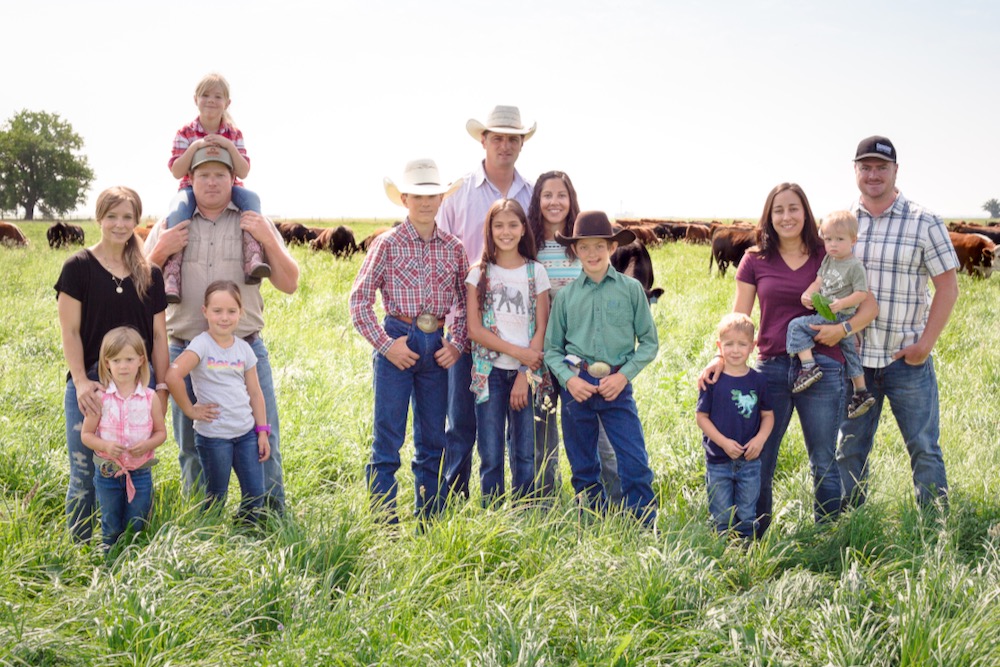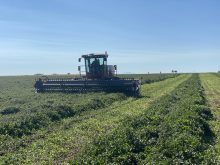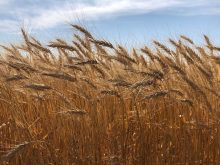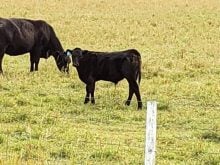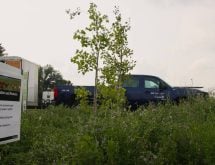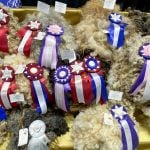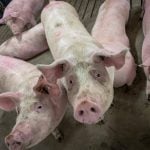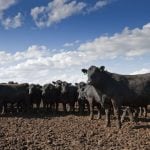What started out as a plan to supply a niche market in the beef industry has over the past six years turned into the focus for a fourth-generation southeastern Alberta ranching operation.
For the Doerksen brothers of Gemstone Cattle Company at Gem, Alta., about an hour north of Brooks, putting some of the efficient beef genetics already found in their commercial cow-calf herd into a grass finishing program seemed like an ideal fit.
“For the most part we had been developing this efficient beef herd over the years,” says Lorin Doerksen, who runs the mixed farming operation along with brothers Barry and Daniel.
Read Also
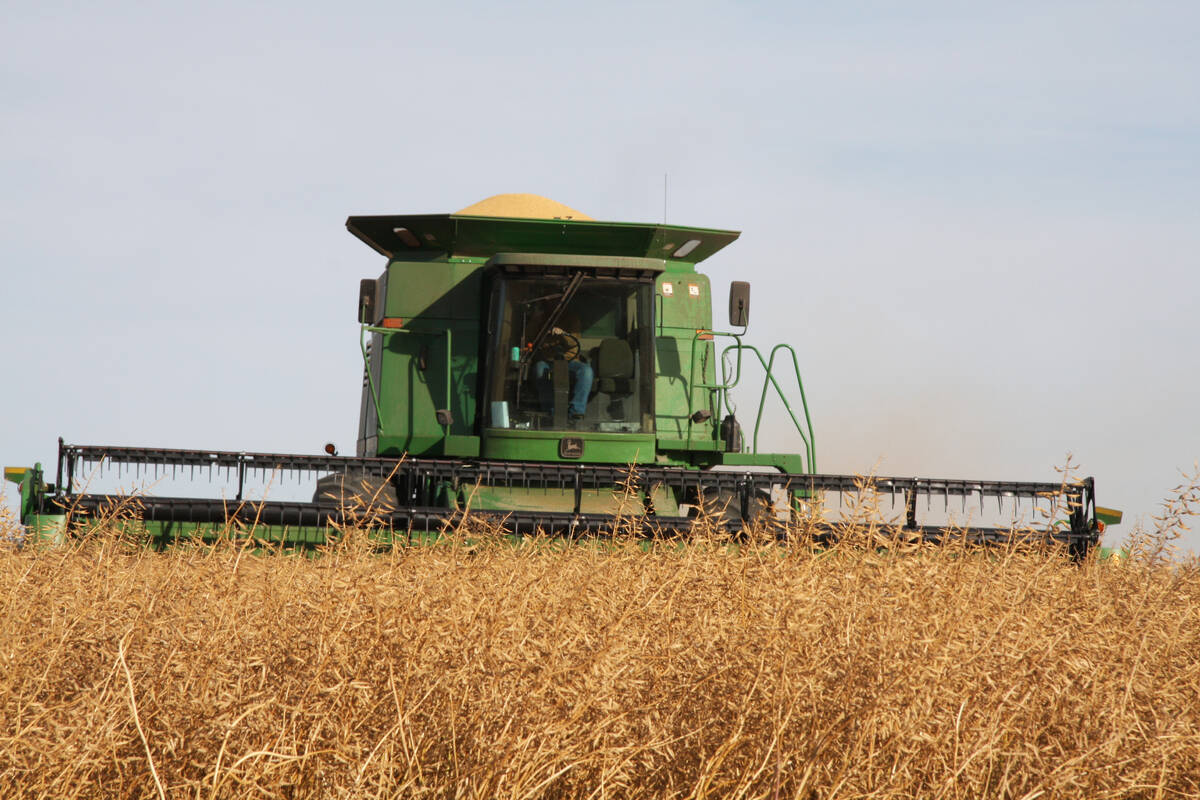
Mustard processor expands in southern Alberta
A $30 million expansion for a southern Alberta mustard facility adds significant milling capacity, improving Prairie mustard growers’ proximity to demand for the raw product.
“So we decided just to put more emphasis on that aspect of our beef program— selecting for animals that performed well on a grass- and forage-based diet, without using any high-energy grains.”
Also active and integral members of the family-run farming operation are their dad Arno Doerksen and uncle Tim.
What started out as mostly online grass finished beef sales in 2018 really took off in 2022, when Gemstone Grassfed Beef opened a retail store as part of the new Calgary Farmers Market West.
Their skills in operating a mixed farming operation and entrepreneurial skills in developing a successful beef retail program earned the Doerksens recognition earlier this year as Alberta’s Outstanding Young Farmers for 2024.
The diversified farm and ranching operation today includes a 600-head commercial cow-calf operation, a 300-head purebred beef operation producing both Red Angus and Hereford breeding stock, an on-farm feedyard, cash cropping geared mostly to forages produced under irrigation for sale as hay and silage and, of course, the grass-finished beef program.
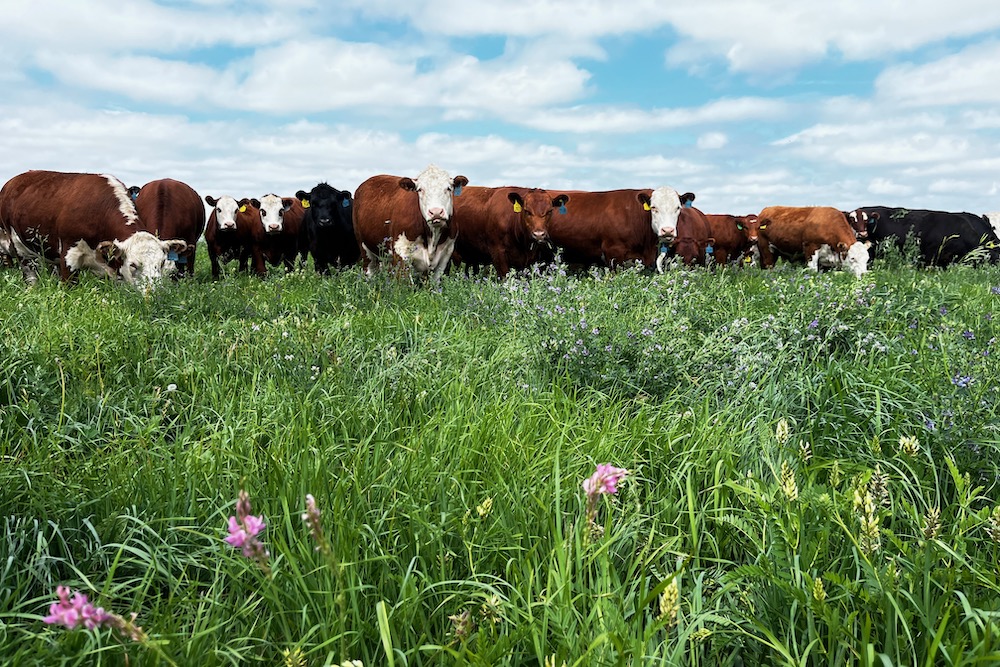
Working with two nearby family-owned, provincially inspected abattoirs, Gemstone Grassfed Beef processes about 15 animals per week (about 800 head per year) with the majority marketed as fresh product through the Calgary store and the rest sold through online sales as retail and wholesale frozen meat cuts to customers across the province.
All cattle from their commercial cow-calf operation — steers, heifers and good-quality open heifers that meet specifications — are channelled into the grass finished beef program to be finished on grass and then processed as early as 21 months and up to 30 months of age.
The Doerksens also source calves for the grass program from other nearby producers following a similar program with similar beef genetics.
“In our purebred breeding program, we develop between 70 and 80 bulls per year that are all developed on a grass program,” Daniel says. “We use some of the bulls in our commercial cow herd and we also source genetics from other purebred operations with a similar focus on grass-finished animals. We also put heavy pressure on our cow herd to select for efficient animals that perform well on a forage-based diet.”
Along with a purebred bull sale each December, the ranch also sells replacement heifers.
The market for grass-finished beef has steadily grown as more consumers pay attention to sourcing more nutrient-dense foods, Lorin says. ‘Nutrient-dense’ refers to foods that include beneficial micro- and macronutrients, such as vitamins, minerals, protein, fibre and healthy fats, like omega-3 fatty acids.
“Research has shown that grass-finished beef is more nutrient-dense than beef finished on a high grain diet,” he says. “We have people calling from all over, looking for grass-finished beef, asking for assurance that it is indeed finished on grass.” A forage-based diet produces very flavourful beef as well, he adds.
The commercial cow-calf and purebred herds at Gemstone Cattle Co. are totally raised on forages. Even the winter feeding program, if needed, involves silage or hay bale grazing. The cowherd begins calving in April and on through into May before heading out to mostly native grass pastures for the summer.
As the season turns into fall, the cattle are brought home and moved onto stockpiled grasses and second-growth tame grass pastures.
While the Doerksens used to wean calves in October/November, that has been delayed in recent years, with calves now remaining with cows until early February. At weaning, cows are placed on a high-quality forage ration to help rebuild reserves as they head toward calving in April. The weaned calves are also placed on a high-quality silage-based ration until they head out to summer pasture.
While they have grown peas and canola on irrigated acres, most recently they have focused more on forage production, looking to produce corn as well as polyculture and multispecies forage blends that are harvested for silage, hay, or used as stockpiled forages for grazing.
The Doerksens use hay and silage in their own feeding program and sell forages to other beef operations as well.
Barry says the beef retail shop in Calgary has been a real success as more consumers want to know how and where their food is produced and look to source healthy, high-quality products. Much of the success is attributed to the fact the company hired a manager who is also a butcher as well as a chef to look after the retail operation.
Looking ahead, the Doerksens say they might add other livestock species to their grass-finished meat program.
“We always have customers asking if we can supply pasture-raised poultry, pork and lamb meat products,” says Lorin. “So we are giving some thought to adding those species to our operation — they can fit in with our grass-fed program without having to increase our land base.”
As they look to increase species and product lines, and as the demand for grass-fed beef continues to grow, Barry says they will need to look at increasing processing capacity as well.


